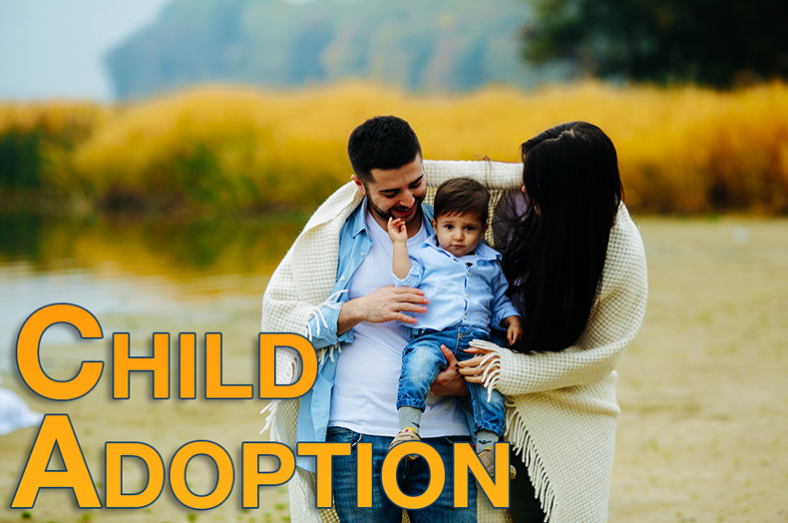Child Adoption in India (GS Paper 2, Society)

Overview:
- Despite a rise in adoptions over recent years, the adoption rate in India remains low, particularly for children with special needs.
- With 18,179 adoptions recorded since 2019 and only 1,404 involving children with special needs, there is a clear disparity in the adoption process.
- This article explores the legal framework, regulatory body, adoption criteria, and the reasons behind the low adoption rates in India.
Background:
- The adoption of children in India has seen an increase over the past five years, yet the number of children with special needs being adopted remains relatively small.
- This gap highlights systemic and societal challenges that need to be addressed to improve adoption rates.
What is Adoption in Legal Terms?
- Adoption is a legal process where a child is permanently separated from their biological parents and becomes the lawful child of their adoptive parents.
- This process grants the adopted child all the rights, privileges, and responsibilities of a biological child, ensuring that the adopted child is integrated fully into the adoptive family.
Legal Provisions Regarding Adoption in India:
India's adoption framework is governed by two primary legislations:
- The Hindu Adoption and Maintenance Act, 1956 (HAMA): Governs adoption for Hindus and certain other communities.
- The Juvenile Justice (Care and Protection of Children) Act, 2015 (JJ Act): This act covers adoption for all communities and is complemented by the Juvenile Justice (Care and Protection of Children) Model Rules, 2016, and Adoption Regulations, 2017.
Key Principles:
- Child's Best Interest: The welfare and best interests of the child are paramount.
- Preferential Placement: Efforts are made to place children with Indian citizens, considering their socio-cultural backgrounds.
Central Adoption Resource Authority (CARA):
- CARA is the statutory body established under the JJ Act, 2015.
- It functions as the central authority for regulating and monitoring adoptions in India, both domestic and international.
- CARA manages a centralized database through the Child Adoption Resource Information and Guidance System (CARINGS), which facilitates the registration of children and prospective adoptive parents.
Who Can Be Adopted?
- Orphans, Abandoned, or Surrendered Children: Children declared legally free for adoption by the Child Welfare Committee (CWC) are eligible.
- Children of Relatives: Adoption of a child by a relative, including paternal or maternal uncles/aunts and grandparents, is allowed.
- Step-Parents: Children from a previous marriage of a spouse can be adopted by a step-parent.
Who Can Adopt?
- Eligibility Criteria: Prospective adoptive parents must be physically and mentally stable, financially capable, and free from life-threatening medical conditions.
- Marital Status: Married couples must have a stable relationship of at least two years and obtain consent from both spouses. Single women can adopt children of any gender, while single men are restricted from adopting girls.
- Age Difference: The age difference between the child and adoptive parents must be at least 25 years.
- Family Size: Couples with three or more children are generally not considered, except for the adoption of children with special needs or hard-to-place children.
Reasons Behind Low Adoption Rates:
Despite the large number of orphaned and abandoned children in Child Care Institutions (CCIs), adoption rates are low due to several factors:
- Lengthy and Exhausting Process: Prospective parents often face long waiting periods with limited communication from CARA, causing emotional strain and frustration.
- Systemic Delays: The adoption process involves multiple bureaucratic steps and legal formalities that can delay placements. Incomplete paperwork and procedural inefficiencies contribute to these delays.
- Social and Cultural Barriers: Societal resistance due to factors like caste, class, and genetics has historically hindered adoption. Although attitudes are shifting, these barriers still affect adoption rates.
- Special Needs and Older Children: Older children, siblings, and those with disabilities face significant challenges in adoption. While international adoptive parents may be more open to these children, domestic adoption rates remain low.
Conclusion:
- While India is making strides in increasing awareness and acceptance of adoption, substantial improvements are needed to address the systemic issues and cultural barriers that hinder the adoption process.
- Streamlining legal procedures, enhancing communication, and fostering a more inclusive attitude towards adoption, especially for children with special needs, can help ensure that more children find loving and permanent homes.
- Continued efforts and reforms are essential to overcome existing challenges and support the well-being of many more children in need.


